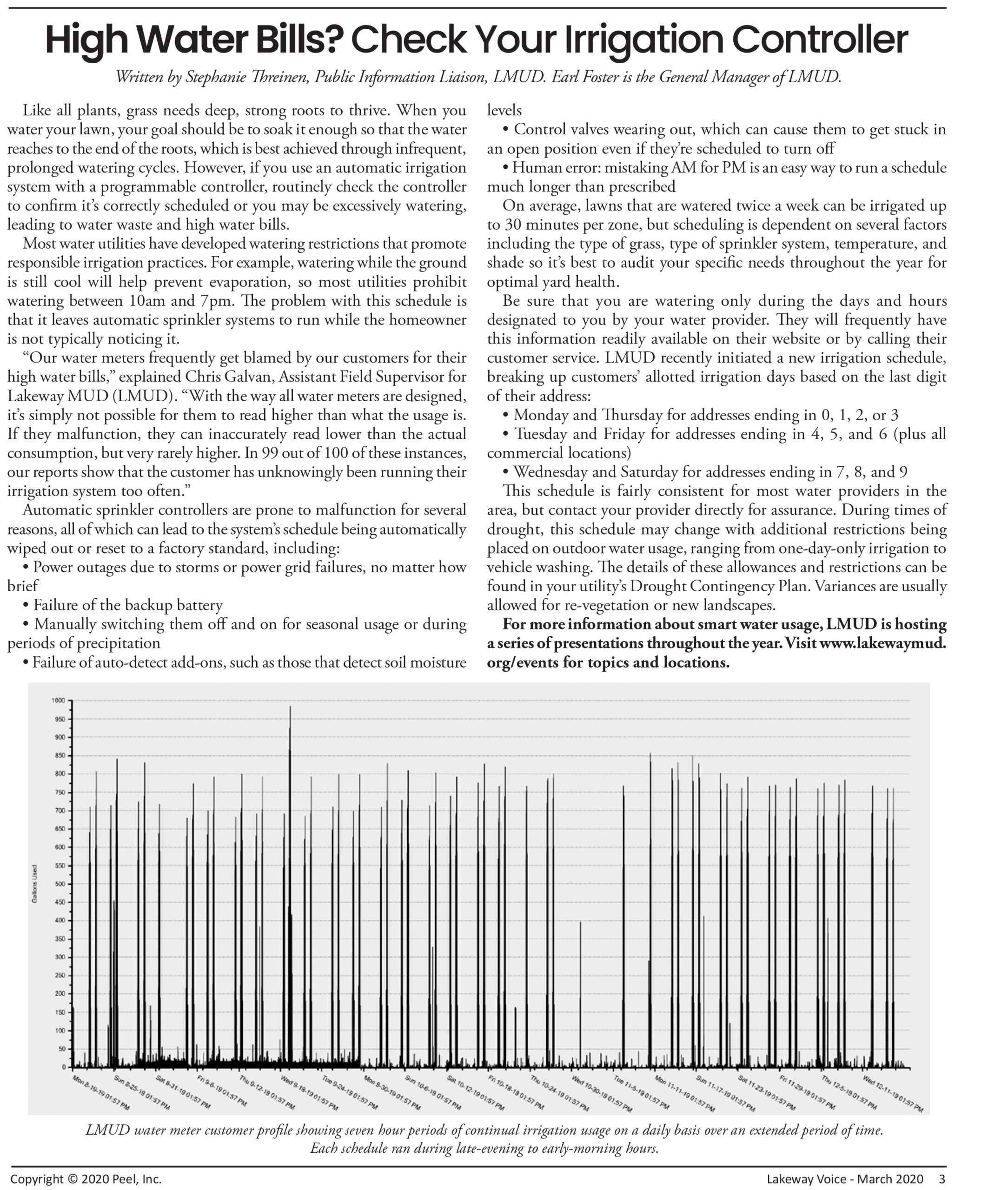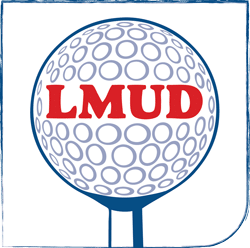High Water Bills? Check Your Irrigation Controller

As published in Lakeway Voice, March 2020.
High Water Bills? Check Your Irrigation Controller
Like all plants, grass needs deep, strong roots to thrive. When you water your lawn, your goal should be to soak it enough so that the water reaches to the end of the roots, which is best achieved through infrequent, prolonged watering cycles. However, if you use an automatic irrigation system with a programmable controller, routinely check the controller to confirm it’s correctly scheduled or you may be excessively watering, leading to water waste and high water bills.
Most water utilities have developed watering restrictions that promote responsible irrigation practices. For example, watering while the ground is still cool will help prevent evaporation, so most utilities prohibit watering between 10am and 7pm. The problem with this schedule is that it leaves automatic sprinkler systems to run while the homeowner is not typically noticing it.
“Our water meters frequently get blamed by our customers for their high water bills,” explained Chris Galvan, Assistant Field Supervisor for Lakeway MUD (LMUD). “With the way all water meters are designed, it’s simply not possible for them to read higher than what the usage is. If they malfunction, they can inaccurately read lower than the actual consumption, but very rarely higher. In 99 out of 100 of these instances, our reports show that the customer has unknowingly been running their irrigation system too often.”
Automatic sprinkler controllers are prone to malfunction for several reasons, all of which can lead to the system’s schedule being automatically wiped out or reset to a factory standard, including:
- Power outages due to storms or power grid failures, no matter how brief
- Failure of the backup battery
- Manually switching them off and on for seasonal usage or during periods of precipitation
- Failure of auto-detect add-ons, such as those that detect soil moisture levels
- Control valves wearing out, which can cause them to get stuck in an open position even if they’re scheduled to turn off
- Human error: mistaking AM for PM is an easy way to run a schedule much longer than prescribed
On average, lawns that are watered twice a week can be irrigated up to 30 minutes per zone, but scheduling is dependent on several factors including the type of grass, type of sprinkler system, temperature, and shade so it’s best to audit your specific needs throughout the year for optimal yard health.

Be sure that you are watering only during the days and hours designated to you by your water provider. They will frequently have this information readily available on their website or by calling their customer service. LMUD recently initiated a new irrigation schedule, breaking up customers’ allotted irrigation days based on the last digit of their address:
- Monday and Thursday for addresses ending in 0, 1, 2, or 3
- Tuesday and Friday for addresses ending in 4, 5, and 6 (plus all commercial locations)
- Wednesday and Saturday for addresses ending in 7, 8, and 9
This schedule is fairly consistent for most water providers in the area, but contact your provider directly for assurance. During times of drought, this schedule may change with additional restrictions being placed on outdoor water usage, ranging from one-day-only irrigation to vehicle washing. The details of these allowances and restrictions can be found in your utility’s Drought Contingency Plan. Variances are usually allowed for re-vegetation or new landscapes.
For more information about smart water usage, LMUD is hosting a series of presentations throughout the year. Visit www.lakewaymud.org/events for topics and locations.
Written by Stephanie Threinen, Public Information Liaison, LMUD. Earl Foster is the General Manager of LMUD.



 You are now being redirected to the WaterSmart page.
You are now being redirected to the WaterSmart page.